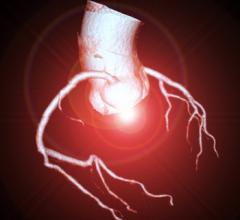April 23, 2008 - In detecting pulmonary embolisms (PE), researchers found that for the detection of PE it is as effective to use D-dimer (DD) measurement in combination with multislice CT (MSCT) compared to DD venous ultrasonography (US) of the leg and MSCT, according to a study published on April 18, 2008 in The Lancet.
This could means that venous US may no longer be needed to diagnose PE when MSCT is used, the researchers said.
Detection of PE presently includes clinical probability assessment (CPA) with subsequent sequential diagnostic tests, such as the DD, US and CT scans. MSCT is able to make several images in a similar way simultaneously. MSCT has provided new potential to replace pulmonary angiography, because it allows more accurate visualization of the segmental and subsegmental vessels. D-dimer ultrasonography involves detection of a protein present in the blood after a blood clot forms.
In a study led by Marc Righini, M.D., Geneva University Hospital, and faculty of Medicine, Switzerland, researchers performed a randomized controlled trial of 1,819 outpatients who were clinically suspected of having PE. There were two strategies for diagnosis that were compared. One (DD-CT) involved 903 patients, who evaluated CPA combined with D-Dimer measurement and MSCT. The second strategy (DD-CT-US), included 916 patients, was the same but included venous ultrasonography of the leg. The effectiveness was quantified by calculating the 3-month risk of recurrent deep vein thrombosis or PE in patients who were left untreated because they had been excluded by either strategy.
The prevalence of PE was 20.6 percent in both groups. There were 186 in the DD-CT group and 189 in the DD-CT-US group. After these patients were removed from the population, 838 remained DD-CT and 855 DD-US-CT. Later examination showed the 3-month risk of PE was 0.3 percent in both groups, in other words both strategies were equally effective. Compared to the old method, which requires lung scans with nuclear medicine techniques, MSCT would be easier and more widely available to doctors.
"We conclude that ultrasound is not needed to rule out pulmonary embolism when MSCT is used. An ultrasound could be of use in patients with a contraindication to CT," they said.
For more information: www.thelancet.com/journals/lancet/article/PIIS0140673608605942/abstract


 January 09, 2026
January 09, 2026 









